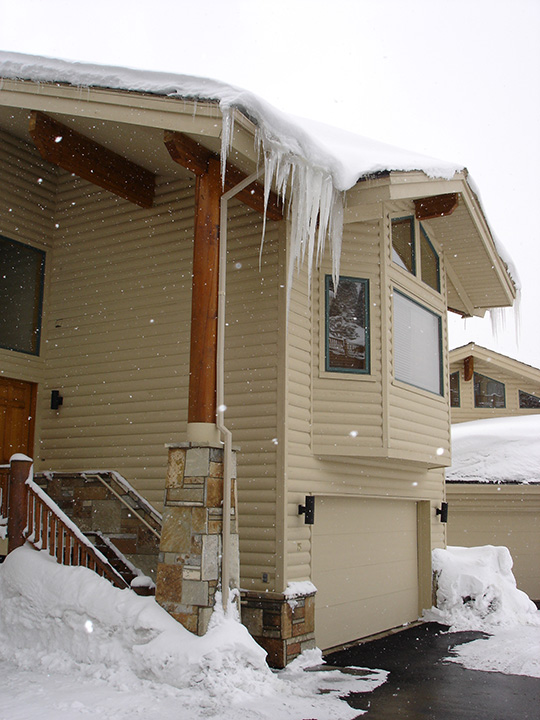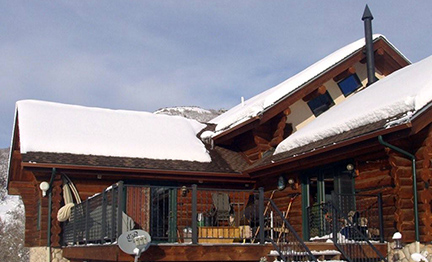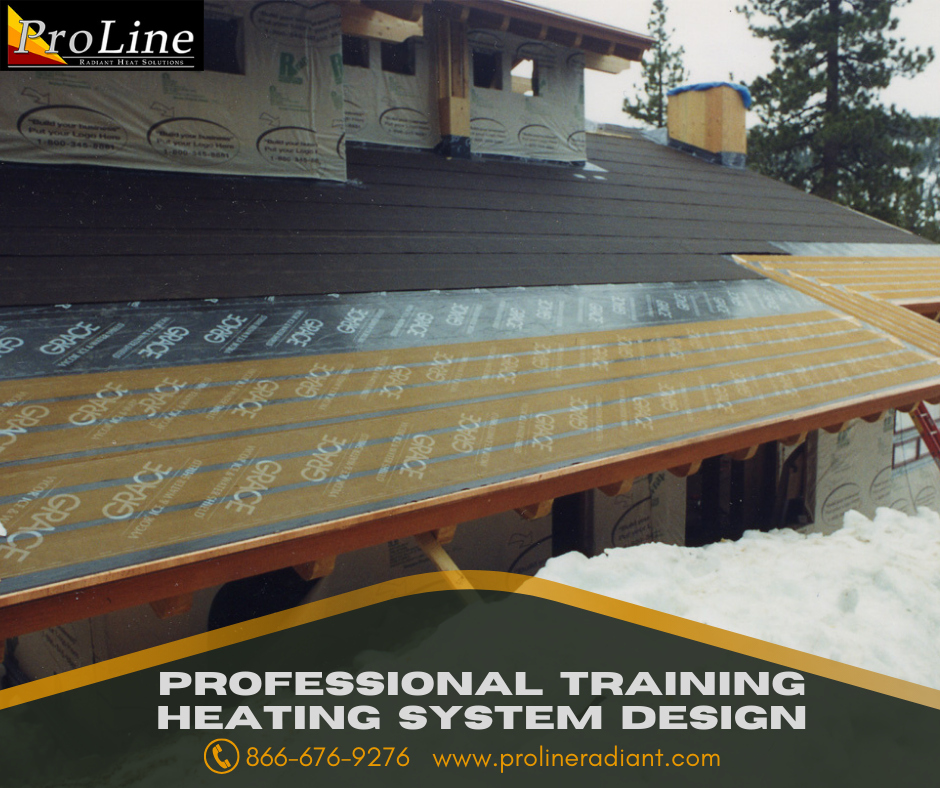De-icing Systems you can Trust
I do a lot of construction-related work in a mountain resort town, known worldwide for its miles of pristine ski runs featuring the “best snow on earth”. It’s a great place for winter sports enthusiasts and vacationers, but as residents know all too well, this “best snow on earth” can also take a toll on roofs and other structures.
While I won’t complain about having a steady workload, it still bothers me to see homeowners spending money on repairs that could have been avoided. Afterall, I’m a homeowner too.
The most common problem associated with winter roof damage is that caused by ice dams. Many water-damage issues that I’ve seen could have been avoided, simply by preventing ice dams from forming.
One key contributor to ice dams is a poorly insulated attic. Ice dams typically form because warm air in the attic heats the roof, and the melted snow trickles down the roof before it refreezes along the roof eaves. (Since there is no warm air reaching the eaves, the roof edges are colder.) The runoff then freezes as it crosses over the cold surface, creating a small ridge of ice. Over time, more and more runoff reaches the ridge of ice, where it also refreezes. Eventually, a large ridge forms, and subsequent runoff from the melted snow pools up behind the ridge. Here is where the problems can occur.

Obviously, pools of water on a roof are not good. When water and gravity join forces, they combine to produce a pretty potent one-two punch. Water can find the tiniest cracks and imperfections on a roof. After seeping into these areas, it refreezes at night, where it expands, exacerbating those small faults and cracks.
Most roofs are durable, and designed to withstand extreme weather conditions, but the reality is that no roof is intended to endure prolonged periods under a pool of standing water. If this “freeze-thaw” process goes unnoticed over the years, roof damage is most likely inevitable. Water will eventually hitch a ride with gravity and find its way into the home.
In one case, water seeped into a house for years, but was not noticed because it trickled down behind a wall located in a remote part of the home. Additionally, because the wall was mostly obscured, the damage remained unnoticed. Only after the water stain expanded considerably was it also discovered that small patches of mold had formed. The cost of the repair work was substantial.
Now, I’m not trying to scare people into installing a roof de-icing system, but when I can, I like to encourage homeowners to take precautions in order to avoid potential problems like water damage. Preventive maintenance allows us to keep one step ahead of the disaster train. Instead of trying to tackle one home repair after another, I prefer to head them off at the pass by administering a little preventive medicine.
All homeowners should inspect their attic to make sure that it is properly insulated. The less warmth that enters the attic, the less likely it is that the bottom layer of snow on the roof melts. Less runoff from snow higher up on the roof means there’s less chance of ice dams from forming. Remind your clients to inspect their attics and make sure that the insulation is abundant, and well applied.

For consumers who have small “problem areas” that are susceptible to ice dams, there is no denying the effectiveness of a roof de-icing system. Systems such as the low-voltage RoofHeat STEP system can be installed under shingles to keep entire roof eaves, valleys, and problem areas completely free of snow and ice during the winter months. (This system can also be safely installed under metal roofs.) However, the most affordable “dam buster” is self-regulating heat trace cable.
ProLine’s self-regulating heat cable can be installed along roof eaves and edges in a serpentine pattern to prevent ice dams and facilitate runoff. The heat trace cable doesn’t melt ALL the snow from the roof eaves, but it effectively eliminates the formation of large ice dams by providing channels that allow the melted snow to find its way to the gutter and downspouts. The durable heat trace cable is versatile can also be installed in roof gutters and downspouts.
The flexible cable’s outer jacket features UV-stabilized thermoplastic elastomer that protects the irradiated conductive core. The self-regulating property allows the conductive core to increase heat output as the temperature falls and decrease output when the temperature rises. This ensures energy-efficient operation, and prevents it from overheating, even if the cables touch.
Because of the affordability and effectiveness of this de-icing system, many consumers opt to install the heat cable on all the roof eaves of their home or business. ProLine system designers create a detailed layout of the system for the installers, which includes all the electrical information necessary for the electrician.
Despite being a wholesale provider of snow melting and de-icing systems, ProLine includes industry-leading support services for the end user. Contractors and building professionals work with ProLine because they know they will receive the services and support necessary to ensure their customers’ satisfaction. Free installation training is provided, as well as technical support, and professional system design and layout. Every system is custom designed to best meet the needs of each customer.
ProLine is the provider of choice for a growing number of contractors. To learn more about ProLine roof de-icing and heat trace systems, contact a friendly professional today, at 866-676-9276.


